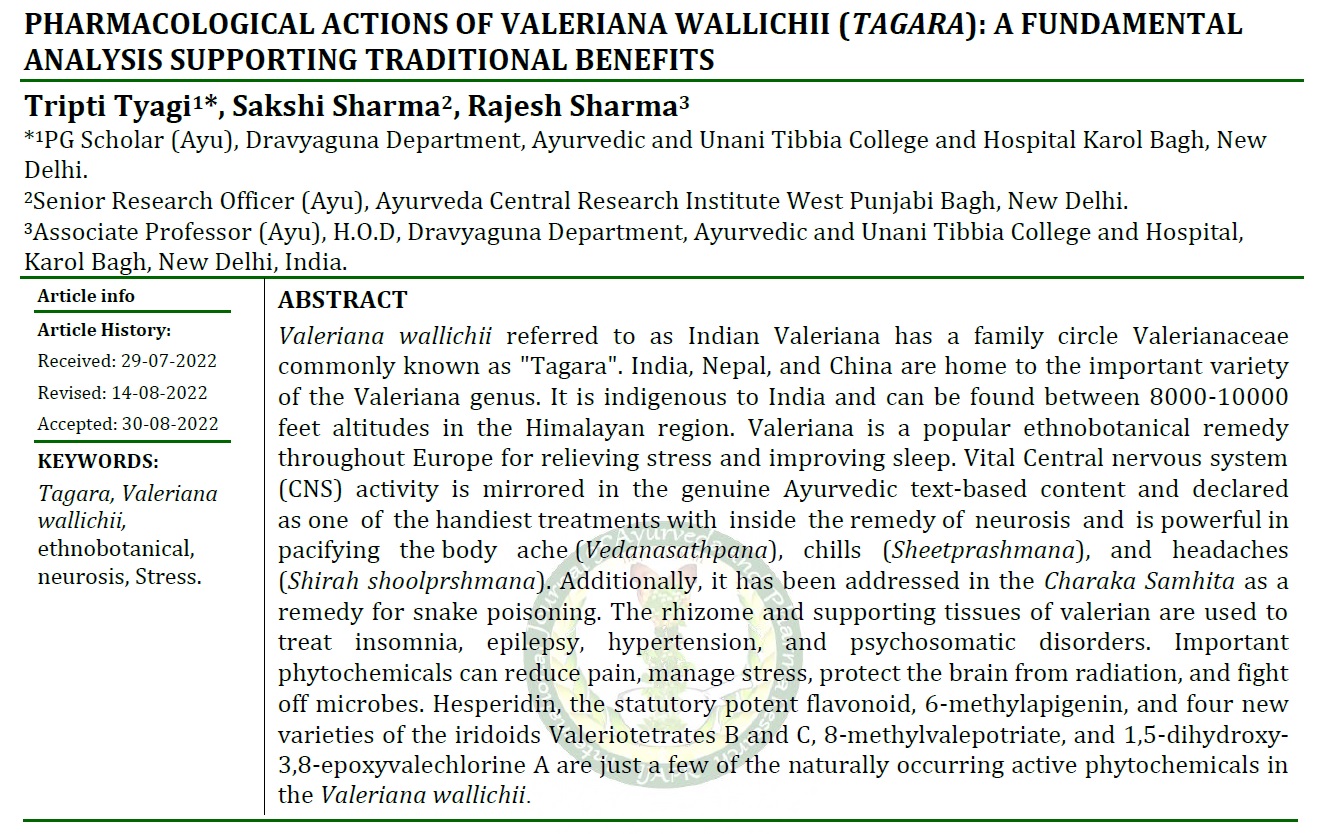Pharmacological Actions of Valeriana Wallichii (Tagara): A Fundamental Analysis Supporting Traditional Benefits
Abstract
Valeriana wallichii referred to as Indian Valeriana has a family circle Valerianaceae commonly known as "Tagara". India, Nepal, and China are home to the important variety of the Valeriana genus. It is indigenous to India and can be found between 8000-10000 feet altitudes in the Himalayan region. Valeriana is a popular ethnobotanical remedy throughout Europe for relieving stress and improving sleep. Vital Central nervous system (CNS) activity is mirrored in the genuine Ayurvedic text-based content and declared as one of the handiest treatments with inside the remedy of neurosis and is powerful in pacifying the body ache (Vedanasathpana), chills (Sheetprashmana), and headaches (Shirah shoolprshmana). Additionally, it has been addressed in the Charaka Samhita as a remedy for snake poisoning. The rhizome and supporting tissues of valerian are used to treat insomnia, epilepsy, hypertension, and psychosomatic disorders. Important phytochemicals can reduce pain, manage stress, protect the brain from radiation, and fight off microbes. Hesperidin, the statutory potent flavonoid, 6-methylapigenin, and four new varieties of the iridoids Valeriotetrates B and C, 8-methylvalepotriate, and 1,5-dihydroxy-3,8-epoxyvalechlorine A are just a few of the naturally occurring active phytochemicals in the Valeriana wallichii.
Downloads

Copyright (c) 2022 International Journal of Ayurveda and Pharma Research

This work is licensed under a Creative Commons Attribution-NonCommercial-ShareAlike 4.0 International License.






